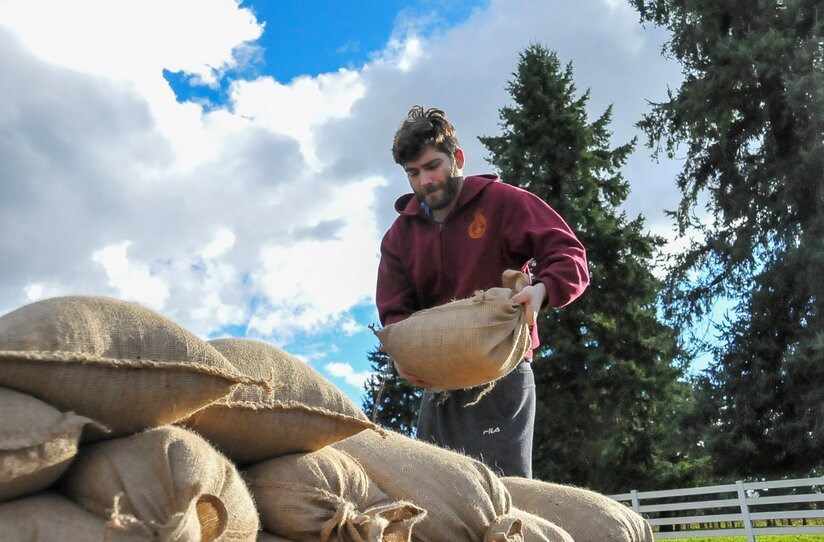Tens of thousands of British Columbians are struggling to piece together their lives after catastrophic flooding destroyed an untold number of homes.
Whether through donations of food, clothing, shelter or even hauling stranded farm animals, British Columbians have mobilized to lend aid to the most desperate.
But with only limited capacity at local emergency shelters, Emergency Management BC says those looking to help should make monetary donations to trusted organizations like the Food Bank of B.C. or United Way.
“First Nations communities, local authorities, and evacuation centres may not be able to accept or manage physical donations from members of the public or businesses,” wrote an EMBC spokesperson in an email to Glacier Media.
“Unless a community or organization has asked for specific goods, donations of physical goods can actually hamper other response activities by drawing time and energy away from them.”
PROVINCE LAUNCHES DISASTER ASSISTANCE
On Thursday, the B.C. government said Disaster Financial Assistance (DFA) is available for any B.C. resident hit by floods or landslides between Nov. 14 and 16, 2021. That includes anyone in the southwest, central and southeast areas of the province, as well as Â鶹´«Ã½Ó³»Island.
The assistance will be made available for anyone without adequate insurance to cover the scale of the damage — from homeowners, tenants and business owners to local governments and Indigenous communities.
“By regulation, DFA is unable to compensate for losses for which insurance was reasonably and readily available,” noted a press release from the Minister of Public Safety and the Solicitor General.
Assessments will be made on a case-by-case basis “in a fair and consistent way,” added the ministry.
If accepted, DFA will cover 80 per cent of the total eligible damage that exceeds $1,000. The most an applicant can claim is $300,000, though claims can be made in more than one category, say as a homeowner and farmer.
Eligible small business owners and farmers must show damage has been done to their primary source of income.
Homeowners and tenants must show damage impacts their principal residence; vacation properties, as well as several luxury items — hot tubs, patios, pools, garden tools, landscaping, luxury items (e.g., jewelry, fur coats and collectables) and recreational items (e.g., bicycles) — are not covered.
must be submitted to EMBC by Feb. 12, 2022, and can be accessed through the government’s online portal.
Local government and Indigenous communities must apply for assistance under a through the EMBC website.
More information is available through the or by calling 1-888 257-4777.
AN OCEAN AWAY
Sheila Thandi Aolick lives in Port Alberni, far removed from the damage her siblings and mother endured at their home on Sumas Prairie.
On Tuesday, one of her brothers and mother escaped their home as the foundation started to deteriorate. But another brother is among 40 people who have stayed behind in the evacuation zone, not willing to leave the house that’s been in the family for nearly 50 years.
“They went back to get him yesterday. But he’s so stubborn,” she said.
Aolick’s daughter lives with brain cancer and seizures, and they regularly travel to Â鶹´«Ã½Ó³»to see medical specialists. Now, the house they stay in is surrounded by water.
“I don’t know where we’re going to stay,” she told Glacier Media.
Still, separated from her family, she said the outpouring of support across the province has been the one of the bright spot in an otherwise stressful situation.
She points to the relief efforts of Sikh community organizations like , which in the last few days rented a helicopter to ferry 3,000 meals to a group of people stranded in Hope, brought 300 pillows to evacuees at an Abbotsford emergency shelter, and provided pizza to dozens of truck drivers stuck in Kamloops.
“There’s a lot of people out there. I’m shocked to see how many people are trying to help, open up their homes for people they don’t know,” said Aolick.
“Still you can’t see. You’re far away on the other side of the ocean.”
So when she saw photos of her brother and mother escaping the floods, it provided one more outlet of relief.
NEIGHBOURS NOT WAITING TO HELP
Others are looking to fill gaps as best they can. Over the last few days, several neighbours of those affected by flood and landslides have been taking people into their homes and donating what they can.
At the shores of the floodwaters in Abbotsford, Tiffany Kosmas and her husband brought down several garbage bags of donations to a landing area where rescuers were dropping off flood victims in boats.
“I was on Facebook and I heard a few of the families were on their way somewhere and they’re still stuck. They don’t have anywhere to go,” she said. “There’s a husband stuck in a semi out there.”
Kosmas filled the garbage bags with clean, dry clothes, milk and a variety of food. Also in the bag — Yahtzee.
“They're probably really bored,” she said.
Such spontaneous support has sprung sprung up in dozens, if not hundreds, of across B.C. Beyond donations, they offer an online clearing house for a host of emergency services, from in the devastated Sumas Prairie area of Abbotsford to hauling .
The fundraising website has set up a hub page to direct donations to legitimate campaigns helping flood victims.
On Wednesday, the launched an extreme weather appeal for donations to help victims of flood, landslides and power outages.
“The devastating flooding in the coastal and interior regions of B.C. has resulted in thousands of British Columbians being displaced. The Red Cross is committed to helping during this urgent time of need,” said Canadian Red Cross vice-president of B.C. and Yukon Pat Quealey in a written statement.
Anyone looking to help can make a financial donation to the online at , or by calling 1-800-418-1111, notes the organization.


